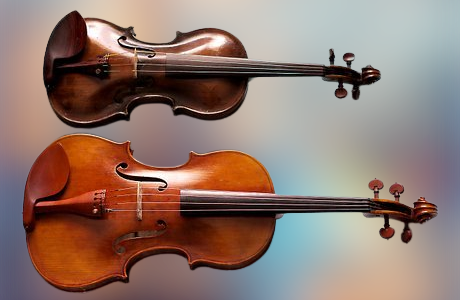
If you’re wondering how to tell the difference between fiddle and violin, you’ve come to the right place! This article will provide you with a lot of useful information about the differences between these two instruments, whether you are a novice or an experienced player. The length of the string, the bridge and the grip are just a few of the things that separate them.
Hardanger fiddle
Hardanger’s fiddle looks similar to the violin. It is a bowed string instrument with four or five resonating understrings. The head is usually carved. This instrument is commonly known as a Norwegian folk instrument.
The Hardanger Fiddle is also used in some liturgical settings. The neck is decorated with inlay of mother-of pearl and canthus patterns. It is played in first position, with the four primary strings and four sympathetic strings.
The Hardanger’s head is usually carved in the form of a head, either a lion or one of two women. Sometimes, the head is carved in the shape of a maiden or a dragon.
European people fiddle
Fiddles and violins are both string instruments. They have distinct sounds. The violin is typically sharper and more lively. The violin is played using a bow and can be used for a wide variety of music genres. This instrument is frequently associated with classical music.
In classical music, the melody is typically a single note, with vibrato. Some styles double the melody in two octaves. The melody is played with a short bow. You use your left hand primarily to vibrato.
The melody in folk music and old-time music is often simple. Sometimes, it is accompanied by a percussive bowing pattern. Sometimes it’s accompanied by a percussive bowing pattern or a pulse lift.
Fifth string
Violins and fiddles look similar, but there are some key differences. While the fiddle can be used as a traditional instrument while the violin can be used to create orchestral music, it is more modern.
Violinas are a more spacious, more melodic instrument with a richer sound. The additional string is located above the G string. Additionally, it has an additional high E string.
On the other hand, the violin has four strings. Its fifth string, a C string, allows for a wider range of notes. It also is more difficult to play.
A violin and a fiddle are not different in looks. The differences lie in technique. The violin requires a slightly different technique, with the bow held higher, and the player holding the instrument between the chin and shoulder.
Bridge
A bridge is small, wooden instrument that holds the string of the violin. It allows for chords and double stops and helps position the strings so that they can produce a good sound. It is relatively simple to place and can usually be replaced if it falls out.
A violin and a fiddle are both four string instruments, but the two can differ in several ways. They can have different materials, they can be tuned differently, and they may have fine tuning devices.
Fiddles are folk instruments that can be used to play bluegrass and country music. Because it’s easy to master, this instrument is popular with beginners. It also has the ability to be used as a rowing boat. It is used for both classical and folk music. The sound is very melodic and clean.
Grip
A fiddle is a stringed instrument, and is similar to a violin. However, there are some differences. Firstly, a fiddle has a unique sound, and is usually played in folk music. The classical violin on the other hand, has a more traditional sound.
You can choose from many types of fiddles. There are many types of fiddles. Some have a simple, one-string soundbox and others five. Some have a rebab, which has a quavering song.
When it comes to bowing techniques, a fiddle and a violin aren’t terribly different. The bow is held closer to the chin by a fiddle player, while the violinist holds it with a chin rest. They may also use extended multiple-stop bowing passages.
String length
The appearance of violins and fiddles is very similar. However, the appearances of violins and fiddles are very similar. The instrument’s size can also play a role. If you’re interested in playing either one, it’s essential to understand the difference in string length.
There are four types of violas. Small models are ideal for children. They are usually between 15-16 inches in length. They are suitable for beginners.
Fiddlers may prefer shorter flat bridges. It allows fast tunes to be performed with lower pressure. This also helps them project the sound more in performance.